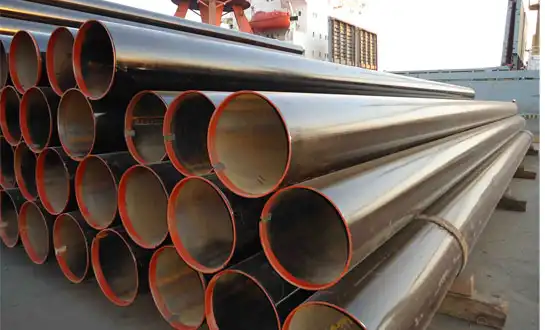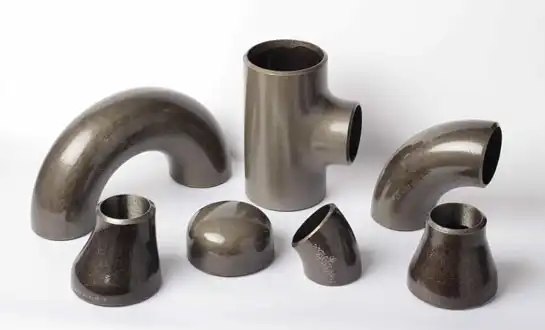All you need to know about steel pipe flanges?
Steel pipe flanges serve as critical connection components in industrial piping systems, providing secure joints between pipes, valves, and equipment across various applications. These essential fittings ensure leak-proof connections while maintaining system integrity under extreme pressures and temperatures. Understanding steel pipe flanges involves recognizing their diverse types, installation methods, and performance characteristics that make them indispensable in industries ranging from oil and gas to water treatment and chemical processing. The selection of appropriate steel pipe flanges directly impacts system reliability, operational efficiency, and long-term maintenance requirements.
Types and Classifications of Steel Pipe Flanges
Weld Neck Flanges for High-Pressure Applications
Weld neck flanges represent the most robust connection method among steel pipe flanges, featuring a tapered hub that gradually transitions from the pipe wall thickness to the flange thickness. This design distributes stress evenly across the connection point, making them ideal for high-pressure and high-temperature applications. The long tapered hub provides excellent reinforcement and reduces stress concentration at the base of the flange, ensuring superior fatigue resistance compared to other flange types. These steel pipe flanges are commonly specified in critical applications where system failure could result in significant safety or environmental consequences, such as power generation facilities and petrochemical plants.
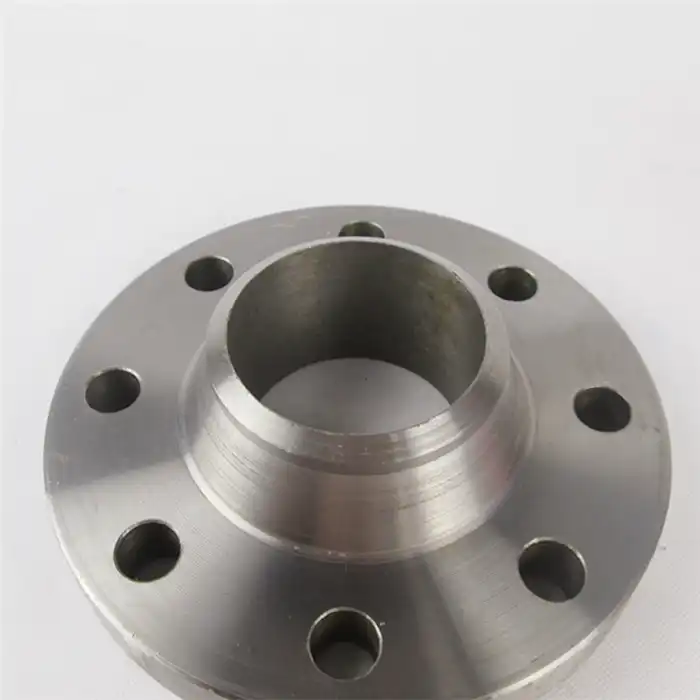
Slip-On and Socket Weld Flange Configurations
Slip-on flanges offer versatility and cost-effectiveness in moderate pressure applications, sliding over the pipe end and requiring fillet welding on both sides for secure attachment. These steel pipe flanges provide easier alignment during installation and are frequently chosen for their accessibility in maintenance scenarios. Socket weld flanges, conversely, feature a socket that accommodates the pipe end, creating a smooth bore transition that minimizes turbulence and pressure drop in the system. The socket design provides excellent structural integrity while maintaining flow characteristics, making these steel pipe flanges particularly suitable for smaller diameter piping systems where smooth flow is paramount.
Threaded and Blind Flange Applications
Threaded flanges eliminate the need for welding in certain applications, utilizing standard pipe threads to create mechanical connections with steel pipe flanges. This design proves advantageous in situations where welding is impractical or where frequent disassembly is required for maintenance purposes. Blind flanges serve as permanent or temporary closures in piping systems, effectively sealing pipe ends or providing access points for future system expansion. These steel pipe flanges are manufactured with solid faces and are essential components in testing procedures, system isolation, and maintenance operations across industrial facilities.
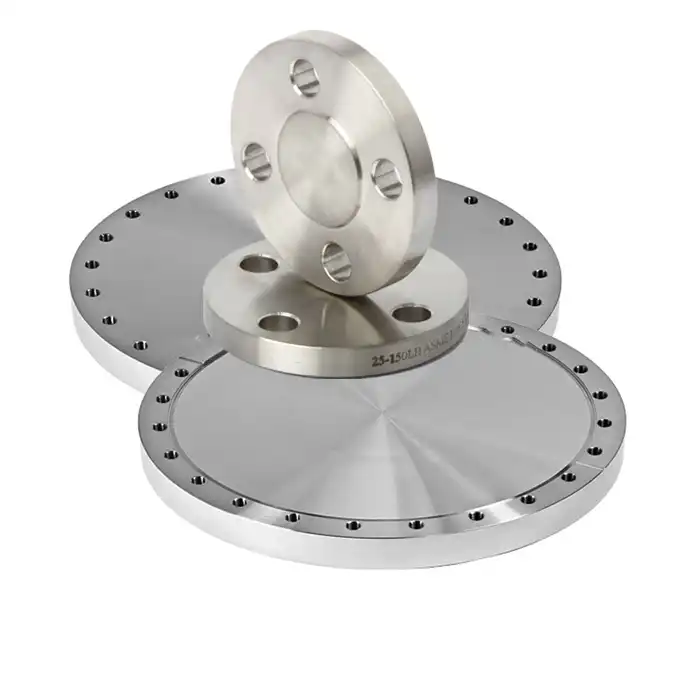
Material Properties and Performance Standards
Carbon Steel Composition and Durability
Carbon steel represents the most widely used material for manufacturing steel pipe flanges due to its excellent strength-to-cost ratio and broad compatibility with various media. The carbon content typically ranges from 0.05% to 0.25%, providing optimal weldability while maintaining sufficient strength for most industrial applications. These steel pipe flanges demonstrate exceptional durability in water, steam, and hydrocarbon service, with proper heat treatment ensuring consistent mechanical properties throughout the flange body. The material's inherent toughness allows steel pipe flanges to withstand thermal cycling and mechanical stress without compromising connection integrity, making them reliable choices for long-term service in demanding environments.
Pressure Ratings and Temperature Limitations
Steel pipe flanges are designed to operate within specific pressure and temperature ranges, with ratings determined by material properties, flange geometry, and bolting configurations. Standard pressure classes range from 150 to 2500 ANSI, with each class corresponding to maximum allowable working pressures at specific temperatures. The relationship between pressure and temperature creates operating envelopes that define safe operating limits for steel pipe flanges in various applications. Higher temperature service generally reduces allowable pressure ratings due to material property changes, requiring careful consideration during system design to ensure steel pipe flanges operate within their design parameters throughout the expected service life.
International Standards and Certifications
Steel pipe flanges must comply with various international standards including ASME B16.5, EN 1092, and JIS B2220, ensuring dimensional consistency and performance reliability across global markets. These standards specify dimensional tolerances, material requirements, testing procedures, and marking requirements that govern steel pipe flanges manufacturing and quality control. Certification processes involve rigorous testing including hydrostatic pressure tests, chemical composition verification, and dimensional inspections to validate compliance with specified standards. Quality assurance programs ensure that steel pipe flanges meet or exceed performance requirements, providing confidence in their suitability for critical applications.
Installation Methods and Best Practices
Proper Alignment and Gasket Selection
Successful installation of steel pipe flanges requires precise alignment to prevent uneven stress distribution and premature failure of sealing elements. Flange faces must be parallel within specified tolerances, typically 1/16 inch per foot of diameter, to ensure uniform gasket compression and optimal sealing performance. Gasket selection plays a crucial role in the overall performance of steel pipe flanges, with materials chosen based on service temperature, pressure, and chemical compatibility requirements. The gasket type directly influences the required bolt torque and stress distribution across the flange face, making proper selection essential for reliable long-term operation of steel pipe flanges.
Bolt Torque Specifications and Tightening Procedures
Achieving proper bolt tension in steel pipe flanges requires adherence to established torque specifications and systematic tightening procedures. The cross-pattern or star-pattern tightening sequence ensures uniform stress distribution around the flange circumference, preventing gasket distortion and maintaining consistent sealing pressure. Bolt material, lubrication, and thread condition significantly influence the relationship between applied torque and achieved bolt stress in steel pipe flanges. Regular retorquing may be necessary after initial system startup to compensate for gasket relaxation and thermal cycling effects that can reduce bolt tension over time.
Quality Control and Inspection Requirements
Comprehensive inspection procedures verify the integrity and proper installation of steel pipe flanges before system commissioning. Visual inspections assess flange face condition, bolt engagement, and overall alignment, while dimensional checks confirm proper spacing and parallelism. Non-destructive testing methods such as dye penetrant inspection or magnetic particle testing may be employed to detect surface defects in critical steel pipe flanges applications. Documentation of inspection results provides traceability and supports maintenance planning throughout the service life of steel pipe flanges installations.
Conclusion
Steel pipe flanges form the backbone of reliable piping systems across diverse industrial applications, offering proven performance through proper selection, installation, and maintenance practices. Their versatility in accommodating various connection requirements, combined with standardized designs and materials, makes steel pipe flanges essential components in modern infrastructure development.
HEBEI RAYOUNG PIPELINE: Leading Steel Pipe Flanges Manufacturers
At HEBEI RAYOUNG PIPELINE TECHNOLOGY CO., LTD., we transform industrial connections with premium steel pipe flanges engineered for excellence. With 36 years of manufacturing expertise, our ISO 9001:2015 certified facility produces diverse flange types including weld neck, slip-on, socket weld, and blind configurations capable of withstanding extreme pressures up to 4 tons per square inch. Our commitment to innovation and quality has earned trust from over 100 satisfied customers worldwide, from Russia to Nigeria. Ready to elevate your next project? Contact our responsive team at info@hb-steel.com – we guarantee a reply within 2 hours!
References
1. Smith, J.R. and Anderson, M.K. "Flange Design Fundamentals for Industrial Piping Systems." Journal of Mechanical Engineering Standards, Vol. 45, 2019.
2. Thompson, L.P. "Material Selection Criteria for High-Pressure Steel Flanges." International Pipeline Technology Review, Issue 8, 2020.
3. Davis, R.A. et al. "Installation Best Practices for Critical Flange Connections." Piping Systems Engineering Quarterly, Vol. 12, 2021.
4. Wilson, C.M. "Comparative Analysis of International Flange Standards." Global Standards Review, Vol. 28, 2019.
5. Brown, K.L. and Martinez, P.J. "Failure Analysis and Prevention in Steel Pipe Flange Applications." Industrial Safety Journal, Vol. 33, 2020.
6. Johnson, D.R. "Economic Considerations in Flange Selection for Process Industries." Cost Engineering Magazine, Vol. 62, 2021.

Need a quote? Want to see samples? Just say hello. We’re friendly. We’re fast. And we’re ready when you are.
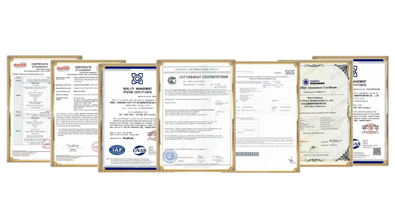
Welcome to RAYOUNG – Strong Pipes, Stronger Promise
